Revolutions are messy. History books, or at least the way I remember studying them, tend to reduce these tumultuous events to a series of dates, significant battles and major political turning points. But what gets left out is the disorganized, conflicted, emotional human ‘messiness’ that often pits friends against each other, separates families and can even cause the exodus of thousands who choose the wrong side. The American Revolution was no different, but it wasn’t until a recent visit to Shelburne, Nova Scotia, and the nearby Black Loyalist Heritage Centre that I became aware of our own Canadian connection to the black ex-slaves fleeing a newly-minted United States of America. That visit was an eye-opener in many ways.
Rebellion Forced a Choice Between a Rock and a Hard Place
The last half of the 18th century was not a particularly good time for the British. Trouble had been brewing for years in their colonies in North America: discontent amongst settlers and landowners who were forced to pay taxes to English overlords had sparked resistance and rebellion amongst the locals, and that resistance was starting to get organized under military leaders like George Washington.
So when England saw things going south, they landed on a creative strategy that would boost the ranks of their local military without recruiting more British soldiers: they offered black slaves their freedom in exchange for serving in the “Loyalist” army. It wasn’t much of a choice for many of these slaves: choosing to throw their lot in with the British was probably the lesser of two evils more than it was a display of support for England.
Sadly for many of these plantation escapees and ‘volunteers’, they saw neither freedom nor a long life as many were killed in the skirmishes, and those that survived the eventual war found themselves in the precarious position of having chosen to play for the losing team.
Escape to Freedom? Not so much.
England had promised to do right by their ex-slave militia and agreed to relocate these Black Loyalists to safer, more British-friendly places, one of which was Nova Scotia, and specifically the port city of Shelburne. Ships from New York were loaded with more than 2500 of these black ex-soldiers, who landed on Shelburne’s shores en masse, expecting to be granted land and opportunity as promised by their British benefactors. Not surprisingly, things didn’t go exactly as promised.
Racism, Ostracism, Opportunism and all the other ‘isms’.
Life in Shelburne was anything but good for the newly arrived Black Loyalists. In fact, they weren’t even allowed to settle in Shelburne proper, but instead had to form their own community on the outskirts, a makeshift settlement that became known as Birchtown (named after British General Birch who had signed the certificates of freedom for these former slaves). Conditions were harsh in Birchtown and the promised land never came to fruition, either as a metaphor for a better life or as actual, tangible land grants that the British had promised. Many Black Loyalists only survived thanks to the help of the local Mi’kmaq who shared their indigenous knowledge of the land and how to survive here.
Racism was alive and well and many local whites took advantage of these desperate black freemen, hiring them to do menial work at a fraction of the wage a white person would earn, or tricking them into contracts as indentured servants. And white ex-soldiers who couldn’t find work themselves in a sinking economy blamed the Black Loyalists for taking those jobs, adding fuel to the racial fire that was smouldering. Tensions rose until they culminated in the first race riot in North American history in July of 1784. For ten days, Shelburne’s black community (and many whites who were believed to be colluding with incompetent British authorities) endured violence and saw their homes destroyed. Violence in Birchtown continued for more than a month where residents were attacked and beaten by mobs that had assembled to “drive the Negroes out of town”.
“No bread. No land. Free, but not equal.”
Not exactly a better life. It’s no wonder then, that more than half of these original freedom seekers decided to return to Africa, when they were presented with what appeared to be a much better offer: the Sierra Leone Company offered to transport them from Nova Scotia to Africa and help them establish ‘Freetown’, a new settlement where they could live under their own governance (which of course didn’t work out quite that way either).
For the Black Loyalists that remained in Nova Scotia, it would be another quarter century or so before economic and social conditions started to improve and the promise of a better life actually started to emerge.
who fought against black segregation and who is now featured on the Canadian $10 bill
A Better-Late-Than-Never History Lesson at the Black Loyalist Heritage Centre
This entire chapter of Canadian history and Nova Scotia’s connection to these black American ‘revolution refugees’ was new news to me – which is equal parts embarrassing and justifiable, given the fact that none of this had made it into my 1960’s grade school curriculum. It was only during my visit to the Black Loyalist Heritage Centre as part of a media tour in Nova Scotia, that all of this history was brought to light for me. Which of course, is part of the reason why the Centre exists.
About the Black Loyalist Heritage Centre
In the early 1990s, the Black Loyalists Heritage Society of Shelburne began sponsoring archaeological digs in the Birchtown settlement area in an effort to prove the land’s importance as a cultural site and prevent it from being used as a regional landfill. After more than 16,000 artefacts were unearthed, the Society opened the Black Loyalist Heritage Centre in 2000. Six short years later, an arsonist set fire to the building, destroying many valuable historical documents, but the Society was determined to preserve its history, and with the help of federal, provincial and municipal funding, rebuilt the current Interpretive Centre in its place.
Today the Heritage Centre is the first of its kind in North America, bringing the history of Black Loyalists to life with world-class interactive displays that help visitors learn more about the history of the Birchtown community – the largest settlement of free Black people outside of Africa at the time.
A timeline in the main exhibition gallery runs the length of the space and helps put events into historical context for visitors, and docents offer additional insight through guided tours. The main exhibition gallery even includes a glass floor positioned over a representation of the archaeological digs where you can see some of the artifacts that started this whole project.
FYI: One of the archaeologists who was instrumental in the Birchtown digs was Laird Niven, who many may know from the Nova-Scotia based reality show The Curse of Oak Island where he is the on-site archaeologist overseeing some of the excavations there.
Meeting a Birchtown Descendant
Today there are only a handful of black residents in Birchtown, but we were lucky enough to meet Jessie Corrigan who is a descendant of the original Black Loyalists who came to live here in the late 1700s. Jessie shared some of her own personal stories as we toured the other sites on the property, one of which was the 1-room schoolhouse where she and her whole family attended classes until it closed in 1960. Another site held a replica of a pit house which would have been the typical shelter for many original Loyalists. Oral history passed down from generation to generation had told of black people “living in holes in the ground” which eventually was corroborated with archaeological evidence from the digs.
Looking at this crude shelter, it was impossible to imagine this as being anywhere near adequate to protect against a Nova Scotia winter. Which dramatically underscored the physical conditions these former slaves had to endure in their quest for a better life.
The Book of Negroes Connection
The Black Loyalist Heritage Centre also holds costumes and props from the Book of Negroes television miniseries which was filmed in and around this part of Nova Scotia in 2015. If you haven’t read this novel by Lawrence Hill, do. The title refers to a Book that was compiled as an inventory of the 3000 freed slaves who left New York with the British after the American revolution. It brings to life the journey these Black Loyalists made, and the role that Shelburne and Nova Scotia played in this piece of their history. (It’s also a compelling read.)
While the main characters in the novel are fictional, the ledger did actually exist and a virtual copy of the Book of Negroes can be found inside the Black Heritage Centre with the names of these original Black Loyalists.
“We have awakened. Freedom’s long voyage continues.”
Visiting the Black Loyalist Heritage Centre and speaking with its docents was a true eye-opener for me and filled in gaps I didn’t even know existed in my knowledge of Canada’s history. But more powerful than the facts and the artifacts on display at this museum were the quotations posted on the walls both inside and out. What is even more interesting is that these quotes reflect comments found in historic documents (in red) and modern ones made by visitors to the Centre (in yellow).
These statements express the human ramifications that resulted from what would otherwise feel like impersonal historical events. The statements describes the emotional suffering, tragedies and injustice – the ‘messiness’ – that these ‘revolutionary refugees’ had to endure as they struggled to find their place in a different world, and how their struggles in turn continue to move people today when they learn about them.
Sadly, the racism that these original Black Loyalists had to endure is not yet a thing of the past, and we still have a ways to go before it does disappear once and for all.
Hopefully, by making Black Loyalist history a part of my own understanding of Canadian history, I’ve taken another step towards making that happen.
PRACTICAL INFORMATION:
Getting there: The Black Loyalist Heritage Centre is located just west of Shelburne, Nova Scotia (about 3 1/2 hours’ drive from Halifax on the southwest coast).
Admission: Adults tickets are $9.20 with discounts for seniors, children and families.
OTHER THINGS TO DO IN SHELBURNE:
Visit the Dory Shop Museum
In the late 1800s, Shelburne was a manufacturing hub for this traditional style fishing boat, turning out a ‘dory a day’ with 8 shops in town making these boats.
This shop/museum produced more than 50,000 thanks to craftsmen and boat-builders like Sidney Mahaney who worked here until the age of 84 and had his hand in building 10,000 of them! Today you can watch how these hand-built boats are made thanks to Master Builder, Milford Buchanan.
Shelburne’s Ross-Thomson House Museum
Get a sense of what life was like (for whites, at least) at the time when Black Loyalists arrived in Shelburne. This museum showcases both the 1785-era residence and store owned by George and Robert Ross, two sons of a Scottish merchant.
Enjoy the Historic Architecture
Much of Shelburne has been restored to look like it would have 200+ years ago, part of the reason why it has been used as a filming location for The Scarlet Letter, The Crucible, Moby Dick and of course, the Book of Negroes. Shelburne is definitely a photogenic town, especially along Water Street and around the waterfront.
WHERE TO EAT AND DRINK IN SHELBURNE
The Ship’s Gallery Pub and Eatery
A great spot for a casual meal, and the maritime themed decor is worth a photo or two.
Boxing Rock Brewing Co. is a great little craft brewery with beers that are as tasty as they are cleverly named (Hunky Dory and PuckOff to name a couple).
WHERE TO STAY IN SHELBURNE
Want to make an overnight of it? Check out the Coopers Inn B&B that is open seasonally starting in May. Enjoy real china cups in the traditionally-decorated rooms and a charming little back garden and patio that is the perfect spot for a glass of wine.
Special thanks to Tourism Nova Scotia for hosting Henk and I on our visit to the Black Loyalist Heritage Centre and Shelburne.

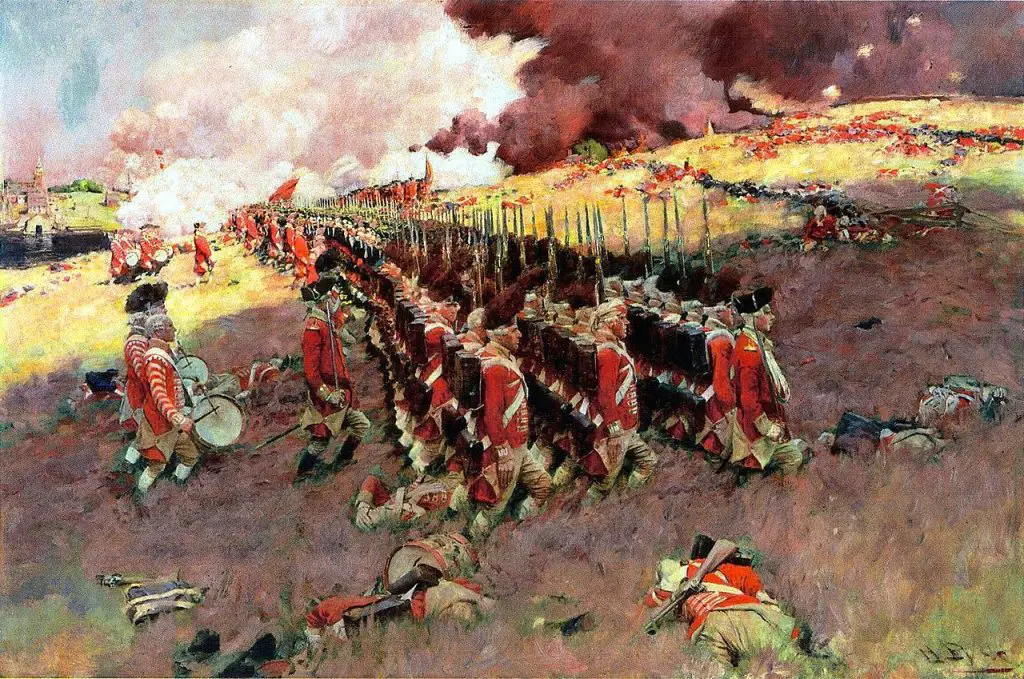
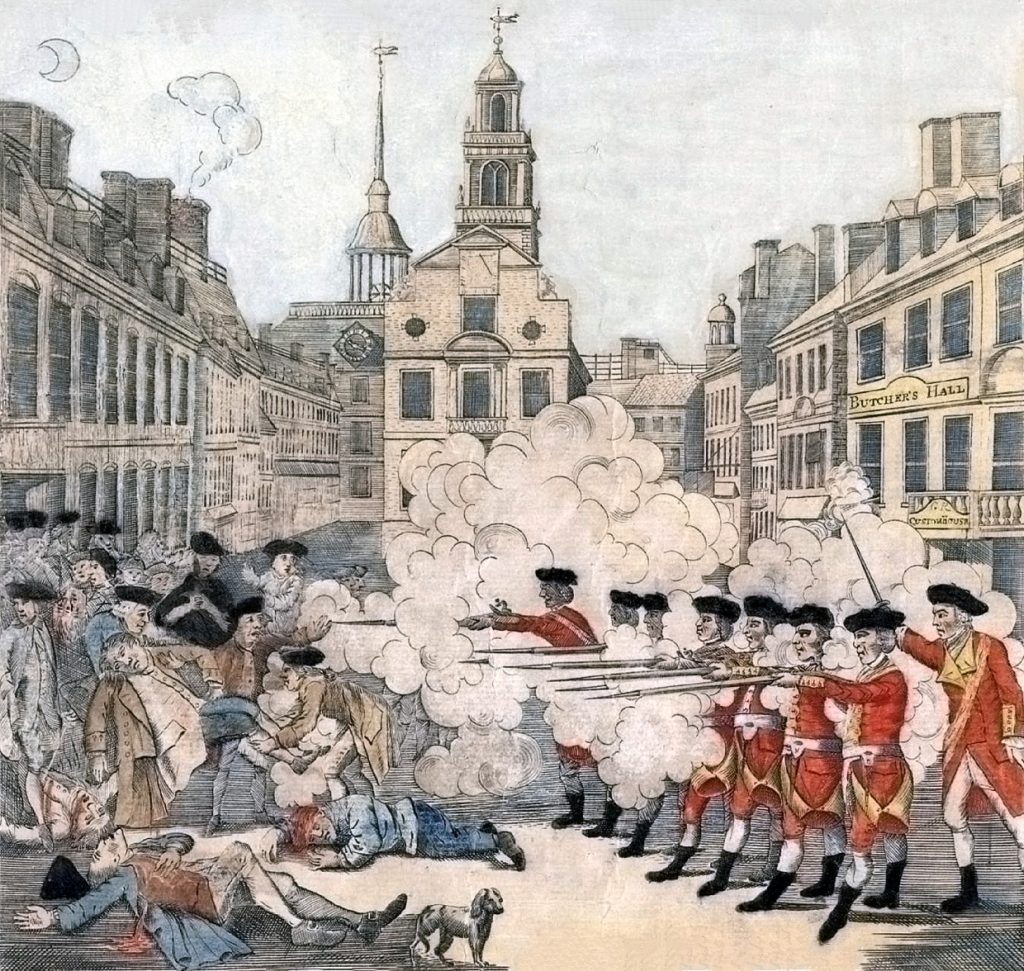
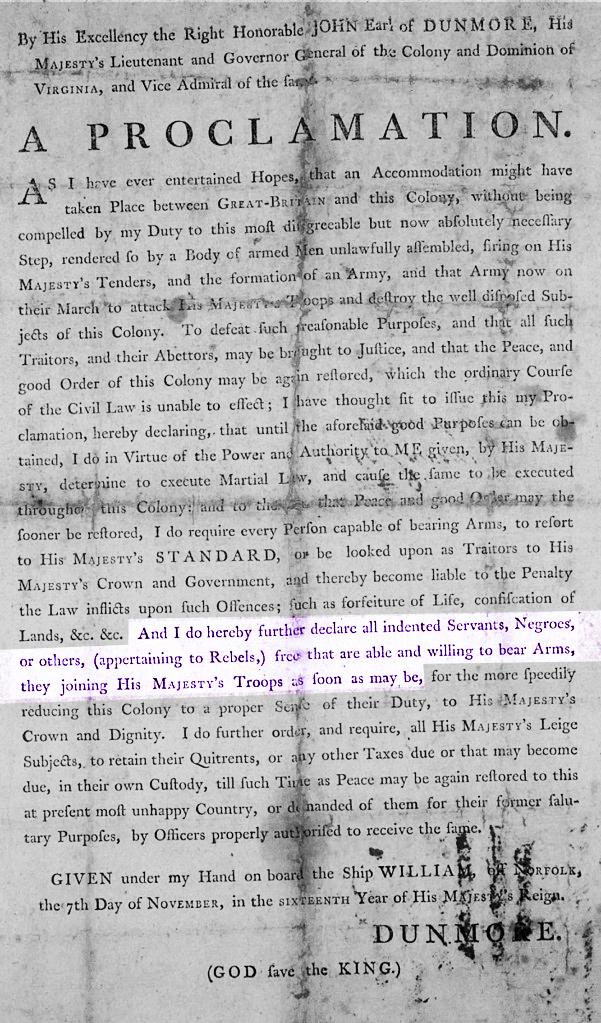
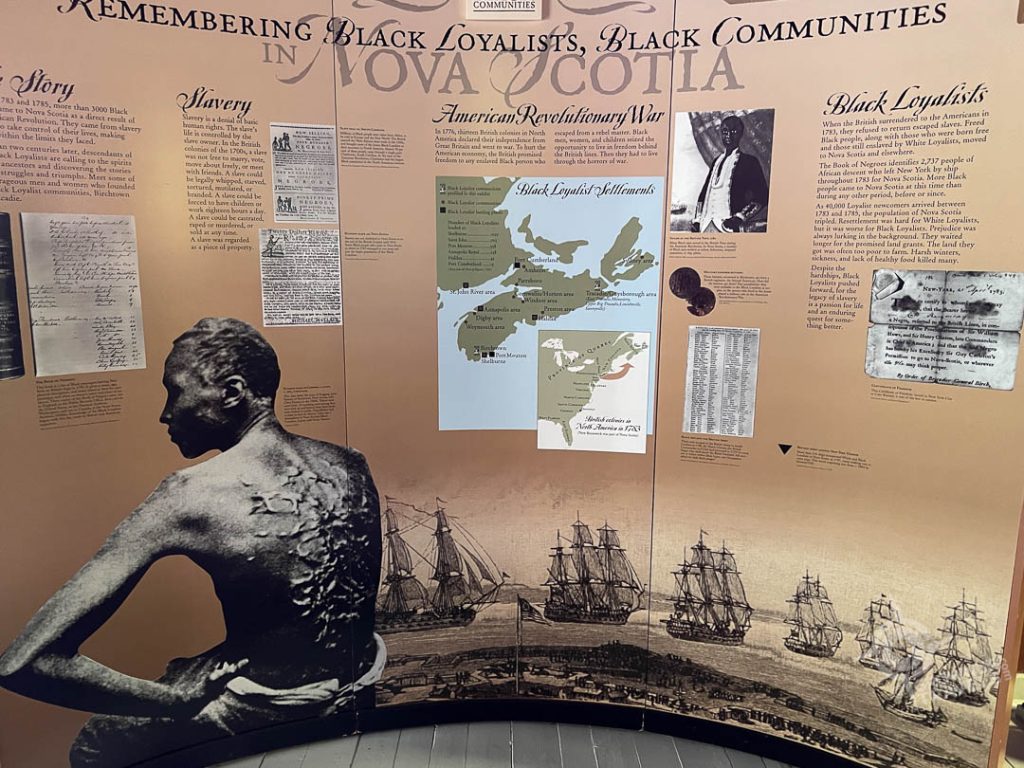
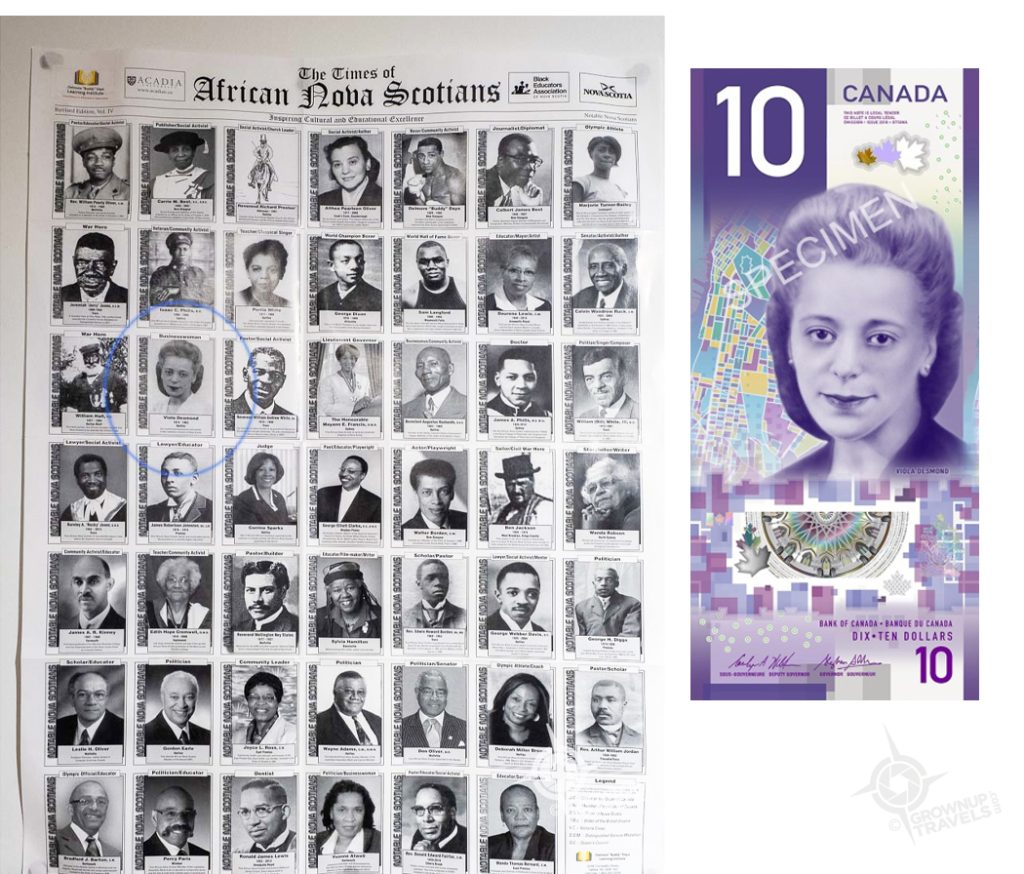
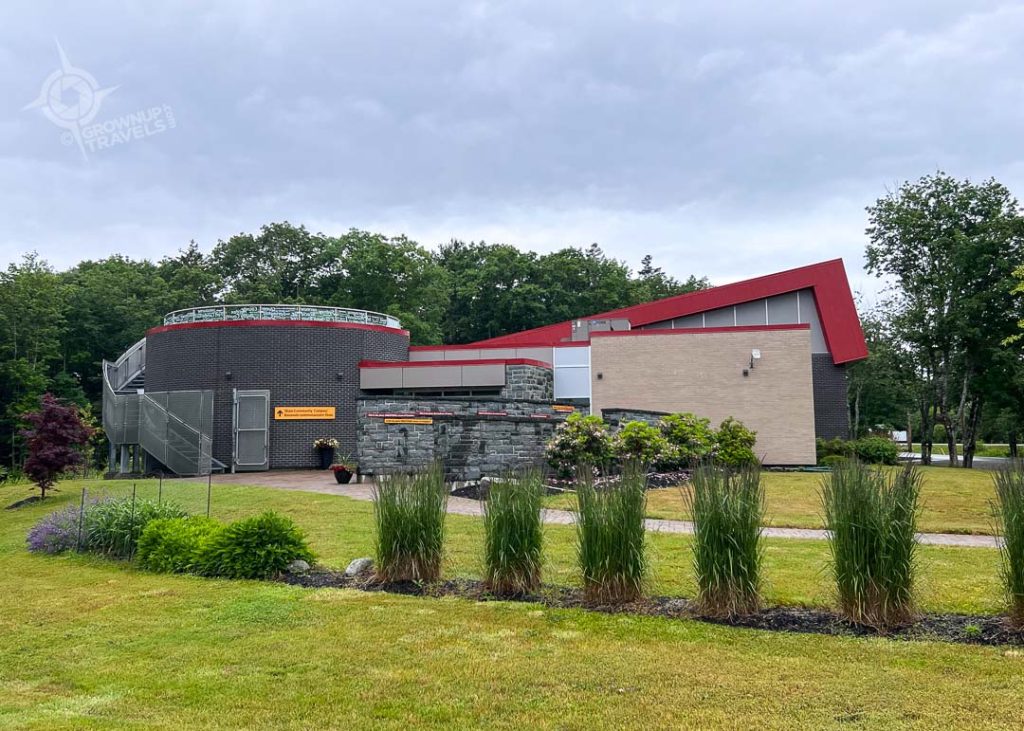
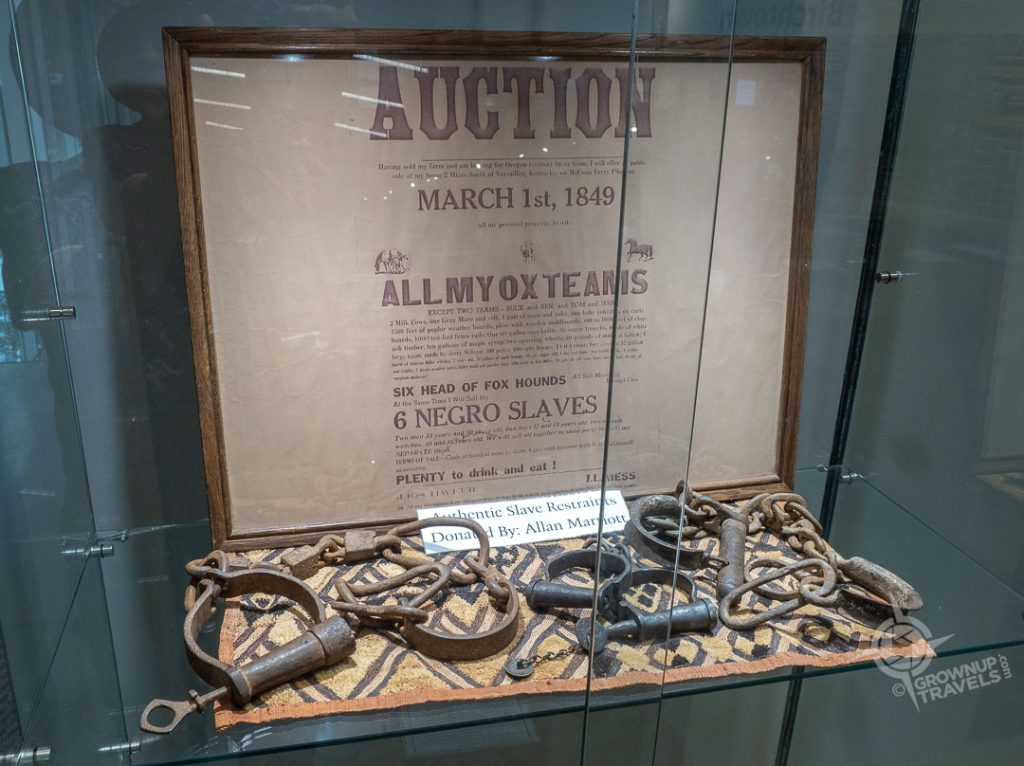
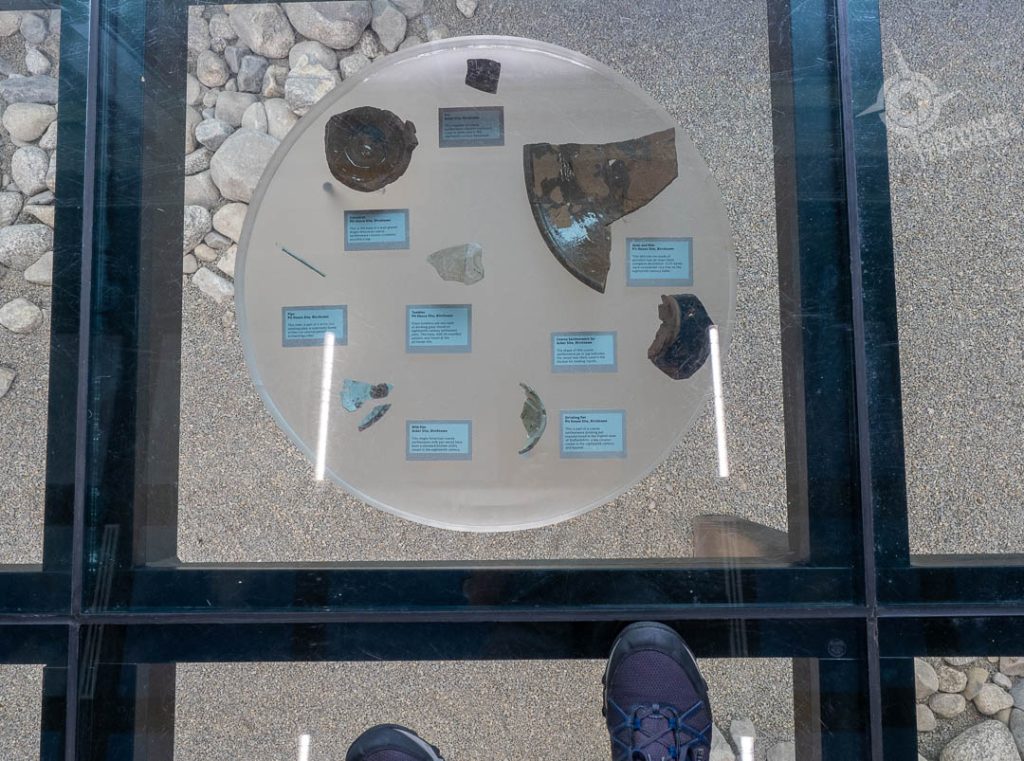
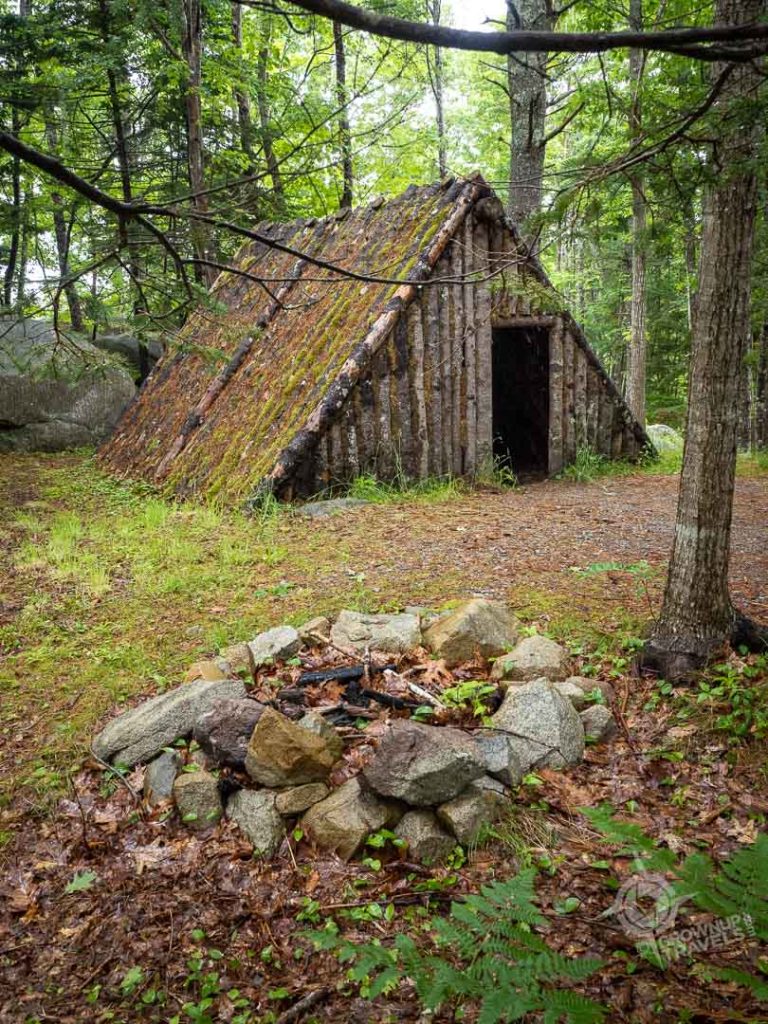
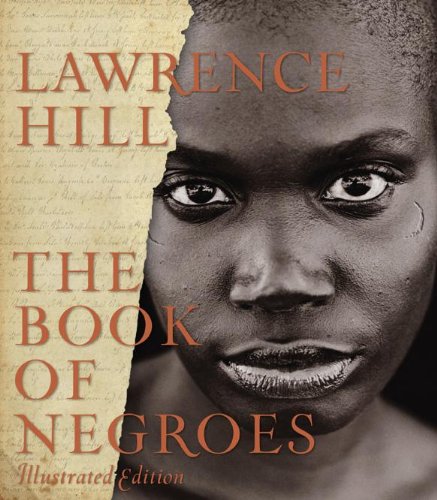
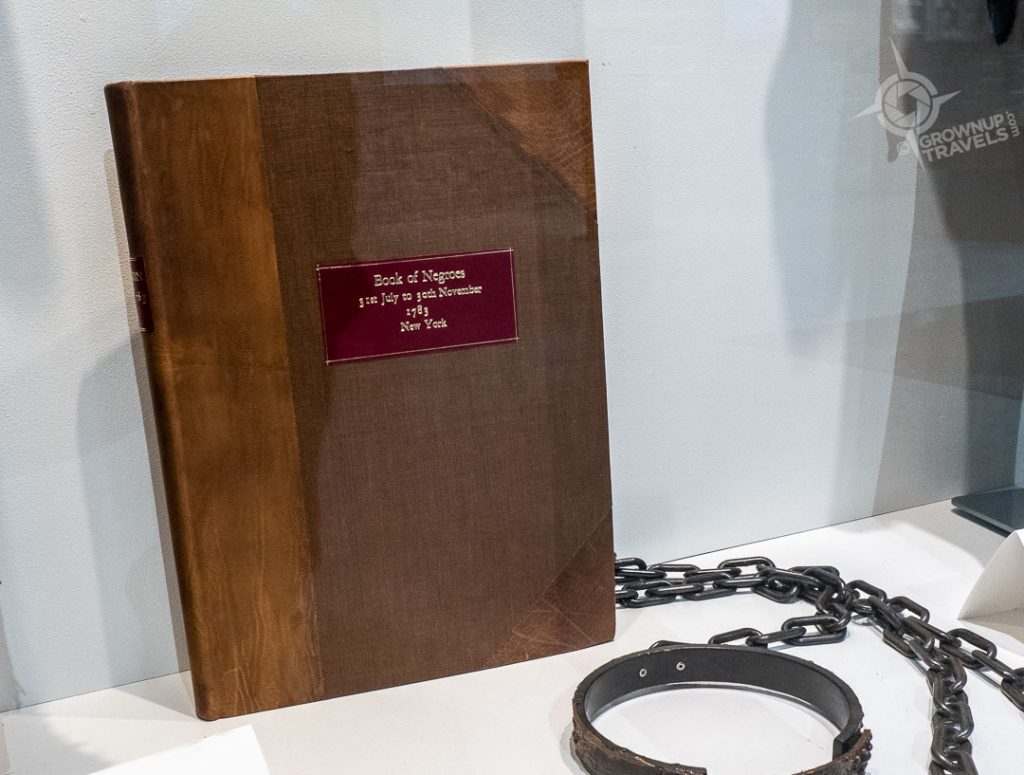
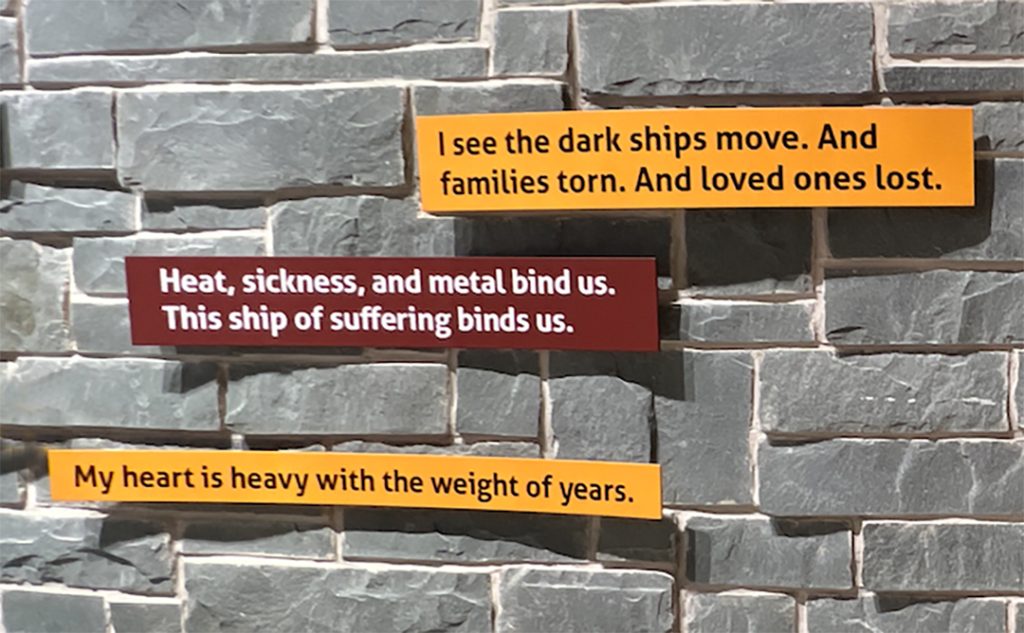
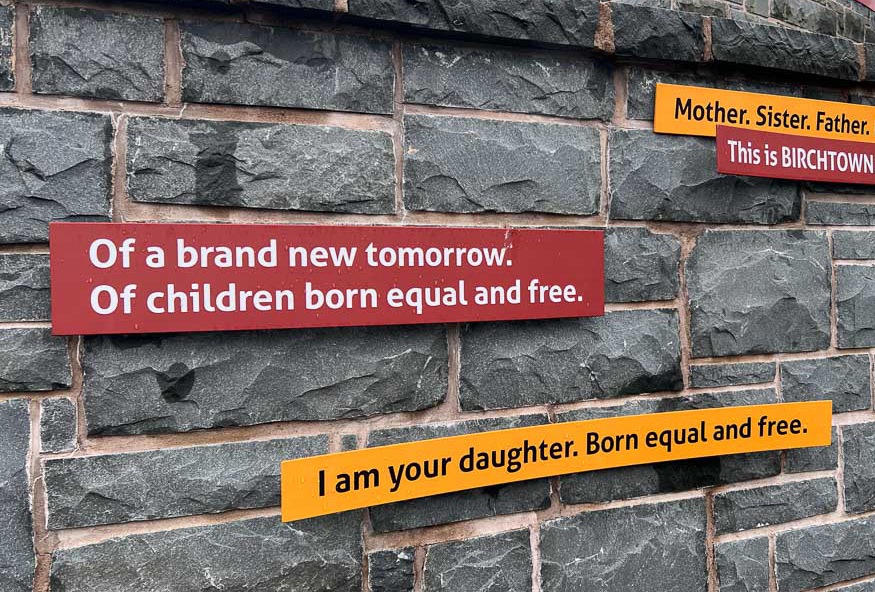
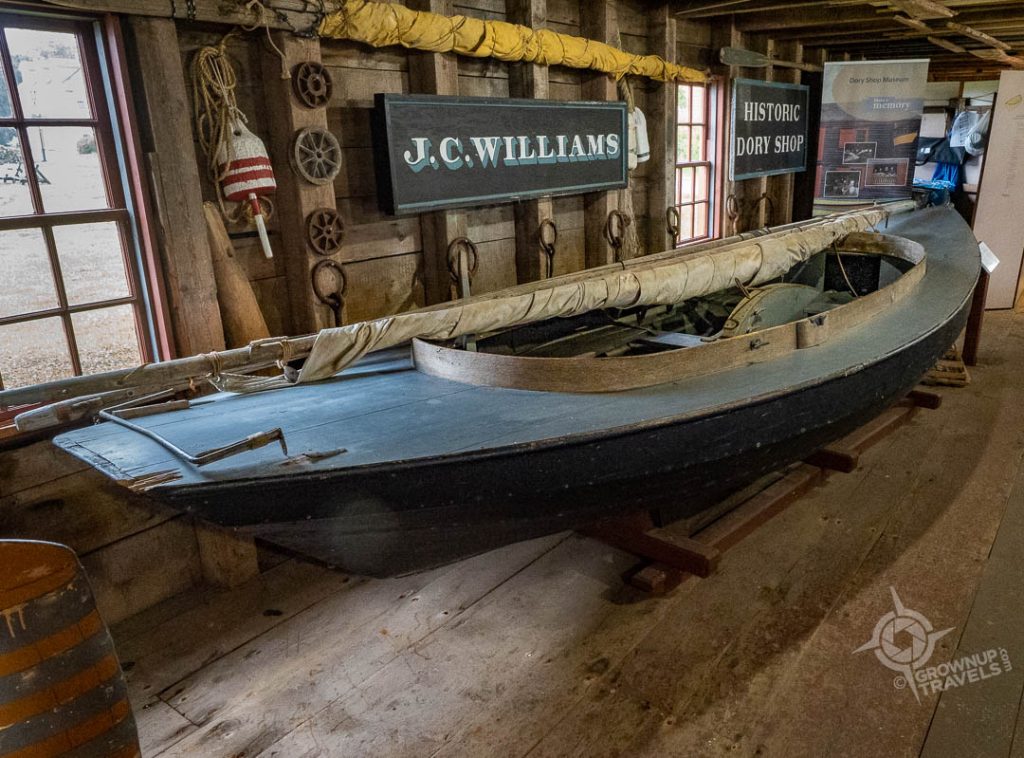
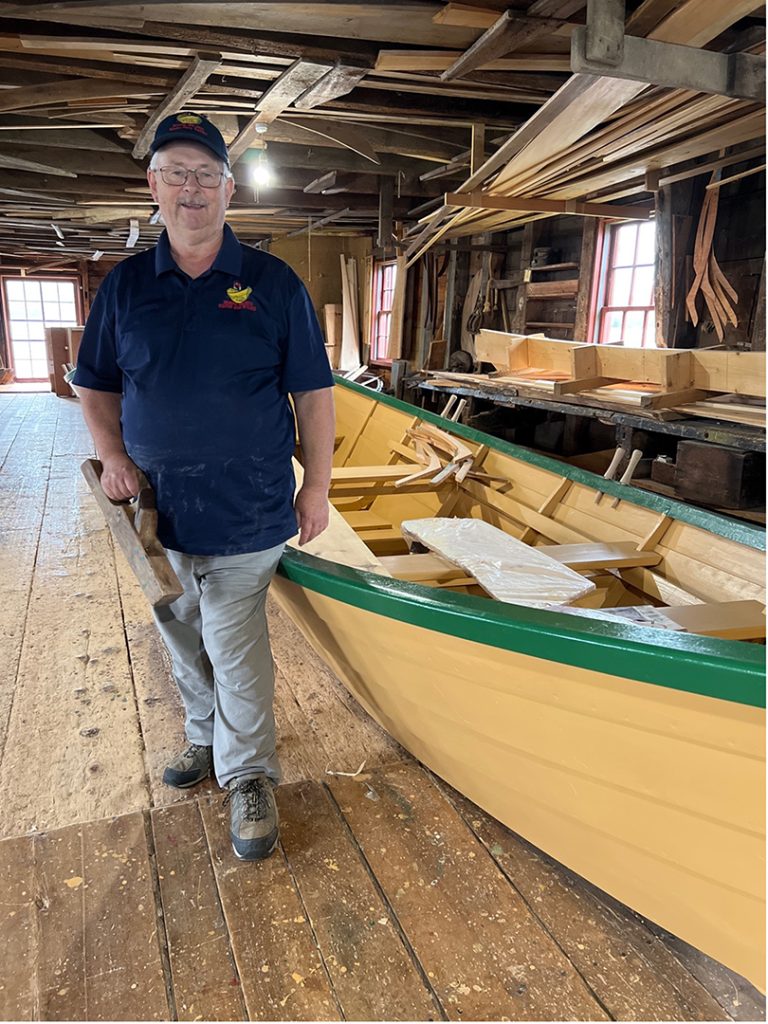


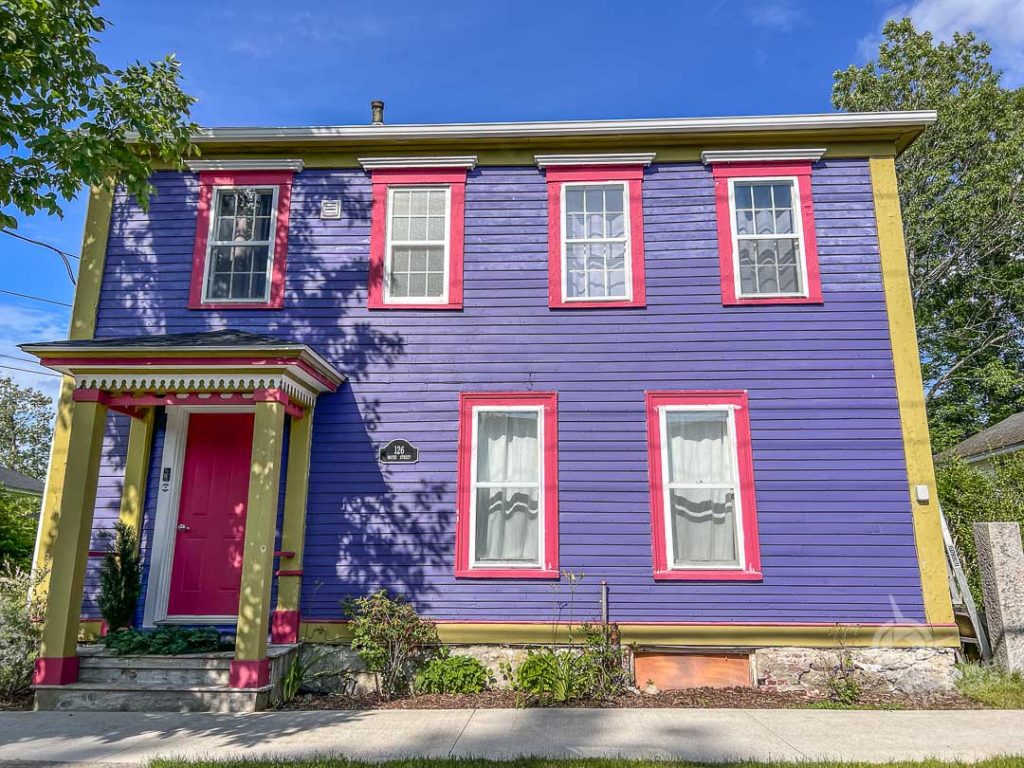

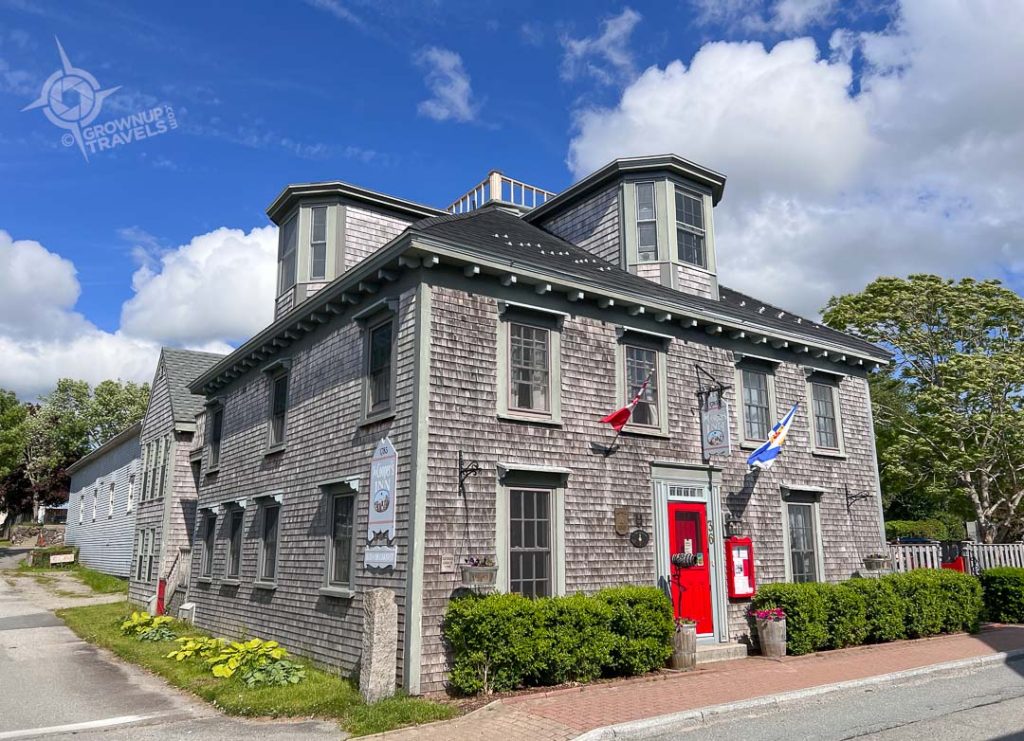
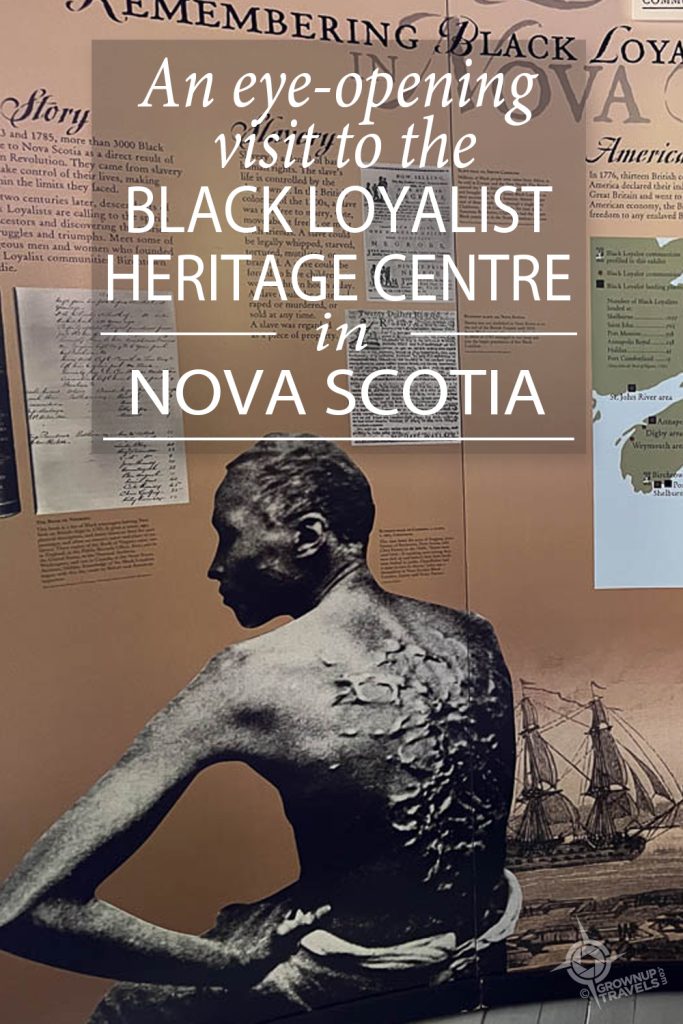











Subscribe and you'll never miss an update!
Join our mailing list to receive the latest news and updates from Grownup Travels. (We keep your email STRICTLY private)
Thank you for subscribing to Grownup Travels!